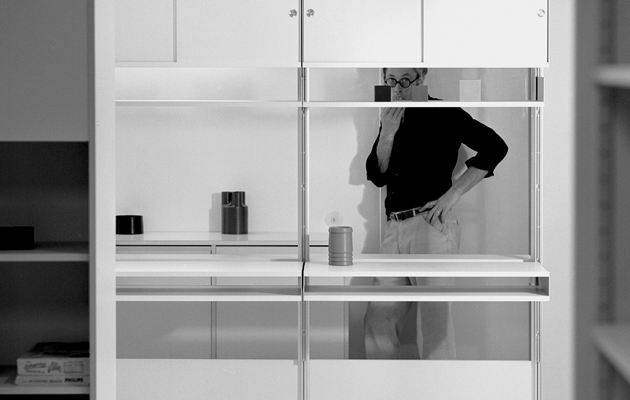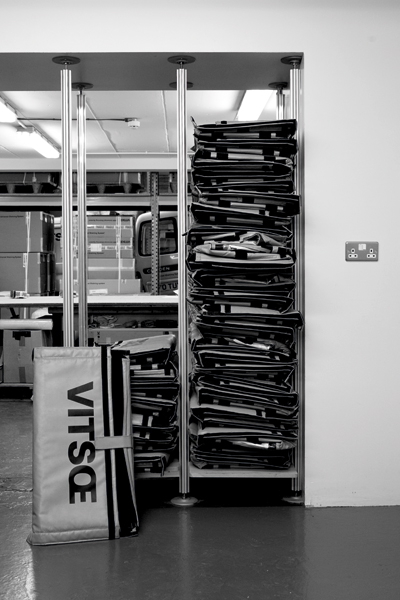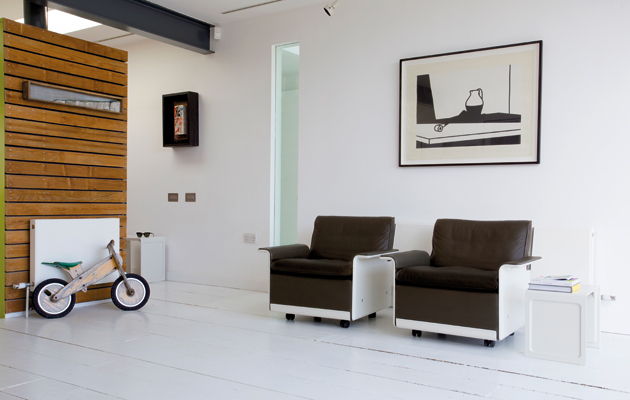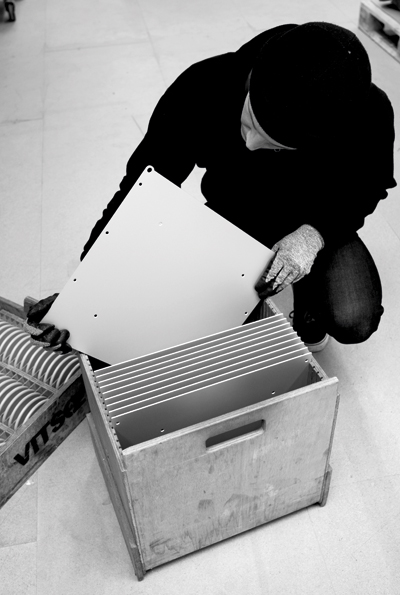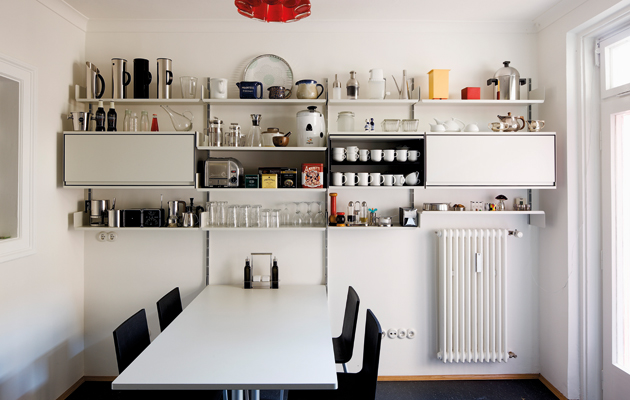|
|
||
|
Vitsœ’s relationship with Dieter Rams has lasted for more than half a century and the firm remains completely faithful to his vision. The principles of adaptability and durability infuse not only the furniture, but everything from its packaging to the design of its new factory. Nowadays, we call it sustainability “We’re a service company,” insists Mark Adams. The company he runs, by all external accounts, is a furniture company – the range of which currently includes a shelving system, a chair “programme” and a side table. But the ethos of Vitsœ, which got its start in 1959 (two years before Adams was born), runs deeper than “things”. “Vitsœ’s purpose – ‘the art of living better with less that lasts longer’ – doesn’t mention shelves or chairs, and doesn’t even mention furniture,” Adams explains. “The bit we really bring to our customers, and it sounds so tacky, is that we bring that quality of life, that smile to their faces.” And it’s work that doesn’t start or end with a sale, or a product – an outlook that makes Vitsœ seem, as ever, ahead of its time. Initially founded as Vitsœ + Zapf, after its co-owners Niels Vitsœ and Otto Zapf, its philosophy and its products are designed by Dieter Rams – as if you couldn’t tell by looking at them. The company, now simply known as Vitsœ, has remained utterly faithful to the designer’s principles ever since. Take in contrast Braun, a company whose product range was completely revamped by Rams, but has now entirely abandoned his aesthetic. Rams had ten principles of design, which he wrote out in the 1970s, and which you can find listed on the Vitsœ website. The most famous is, of course, “Good design is as little design as possible,” but another seems even more relevant today: “Good design is long-lasting.” That, for Vitsœ, needs to be the future, with Adams expressing disgust at how focused on “new” the design world has become at every level – a deeply worrying trend.
A cabinet being built in the Vitsœ workshop
Re-usable bags for delivering cabinets Adams makes an example of the microwave in the company canteen: “The previous one lasted 20 years, this one lasted 18 months.” Meanwhile, owners of Vitsœ products are in a position where they must consider who to will their shelving to when they die. Indeed, shelving is a good case-in-point: Vitsœ actively encourages its customers to keep them when they move, even passing them down to their kids when they downsize. They’re made to be transferrable, rearrangeable and – another Rams principle – unobtrusive. Take a look at Vitsœ’s brochures: in so many, the shelves are covered with stuff. In one 1997 brochure for the 606 Universal Shelving System, well‑respected Brits are featured at home: Ross Lovegrove, Alan Jackson, the former Jamaican ambassador John Pringle and Dada Rogers, mother of Richard. The overriding message: Vitsœ is a chameleon. It is designed for your life; when so many other brands try and shout, Vitsœ’s work is trying its best to whisper. |
Words David Michon |
|
|
||
|
620 Chair Programme by Dieter Rams for Vitsœ |
||
| Adams moved production from Germany to London in 1995, two years after he took the reins of the company (he had been marketing Vitsœ in the UK quite successfully for some years by that point). But from its modest, peaceful facility in Camden, big plans are being hatched. A new factory is planned for Royal Leamington Spa (69 minutes by train north of London, in the West Midlands, nestled among many of Vitsœ’s suppliers). And, to help it along, the firm has tapped into its very dedicated customer base, deciding in January 2014 to issue five-year bonds at a minimum buy-in of £5,000. The scheme received an overwhelmingly positive response (some bondholders have even offered not just their cash, but also any expertise they might be able to contribute to the success of the project).
The Leamington factory, which breaks ground in the next six months, will be more than just a place to make its product. With it, the brand hopes to explore its design principles through a piece of architecture: it will be a flexible and multi-purpose space (Adams is hoping to host concerts there too), with a very un-tech version of sustainability – it must be long-lasting. It won’t be outgrown soon, and the building should be able to be added to, changed around or, if the company needs to move on, passed down – just as you might treat your 606 shelving system.
Cabinets ready for delivery in their £120 protective bags
Stillage for 606 component What is compelling about Vitsœ is that, increasingly, it pushes its design philosophy into the rest of its business. This is, perhaps, partially what Adams means when he calls it a “service company”: not only can you read its products as a service (bringing you better quality of life), but there’s a dominant focus on the experience of Vitsœ. From 2013, for instance, the company ceased selling its wares through dealers in Germany – taking all sales in-house to have more control (there’s one shop in Munich, and of course, online). The relationship customers have with Vitsœ is inseparable from its products; the company thinks both figuratively and literally about the complete package (and how it is delivered and by whom). And that’s exactly what is being Rams-ified by Adams and his team at the moment. Re-usable packaging is already in use in the UK, but is soon to be rolled out across Europe – bags that cost £120 a piece, for instance, to protect a cabinet worth only £500. These bags are returned after delivery (unburdening the recipient of the necessity to dispose of stacks of cardboard), and will remain in operation for 15 years or longer. That’s Rams sustainability. And that’s Rams’ legacy. Well, that plus a back catalogue of designs – two of which will be put into production when Leamington is up and running. Meanwhile, Adams is planning his own legacy: within two to three years, Vitsœ will be employee-owned, as was set out in the bond document. But perhaps more intriguingly, Adams hopes to bring the Vitsœ-Rams lens to something other than furniture for the first time. Very exciting. |
||
|
606 shelving and integrated table |
||

